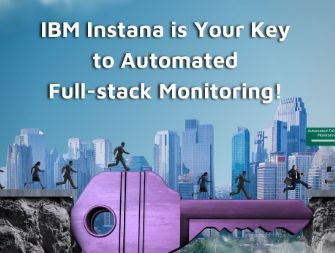August 2025 – New York, NY
In today’s hyper-connected economy, a slow application isn’t just annoying—it’s expensive. Research from IDC suggests that even a one-second delay in app response time can reduce customer satisfaction by 16% and conversion rates by 7% (IDC, 2025). That’s why Application Performance Monitoring (APM) has become mission-critical for organizations that understand downtime isn’t measured in minutes—it’s measured in lost revenue, customer trust, and social media meltdowns.
What Exactly is APM?
Think of APM as a 24/7 health tracker for your software. It continuously monitors applications to ensure they’re fast, reliable, and performing as expected. If performance slips, APM tools pinpoint where and why—before users start rage-refreshing their browsers.
Modern APM goes far beyond simple uptime checks. It dives deep into end-user experience monitoring, application dependency mapping, and real-time analytics to detect bottlenecks at the code, server, or network level.
Why It Matters in 2025
With the rise of microservices, cloud-native apps, and edge computing, software performance issues are no longer just about one faulty server. A single user action might trigger interactions across dozens of microservices and third-party APIs, each a potential point of failure.
Without APM, diagnosing slow performance in such environments is like finding one bad bulb in a string of 500 holiday lights—only the lights are scattered across three continents.
Core Capabilities
-
Real User Monitoring (RUM): Tracks the actual experience of each user, capturing load times, error rates, and interaction patterns.
-
Synthetic Monitoring: Simulates user behavior to proactively test app performance before issues arise.
-
Distributed Tracing: Maps the journey of a request across services to spot bottlenecks instantly.
-
Anomaly Detection: Uses AI to flag unusual performance patterns without flooding IT teams with false alarms.
Business Impact
-
E-commerce: Retailers use APM to ensure peak-season sales events don’t collapse under traffic spikes.
-
Finance: Banks deploy it to guarantee real-time transaction processing stays under regulatory latency thresholds.
-
Healthcare: Telemedicine platforms depend on APM to keep video consultations smooth and glitch-free.
In each case, the common thread is clear: faster apps equal happier customers—and happier customers spend more.
Challenges and Considerations
The hardest part of APM today isn’t buying the tool—it’s integrating it into the chaos of hybrid and multi-cloud ecosystems. Some teams also struggle with data overload—APM generates a mountain of metrics, and without clear KPIs, organizations risk “analysis paralysis.”
Additionally, licensing costs can balloon if companies monitor everything without prioritizing critical transactions or services.
The Future of APM
We’re already seeing a convergence between APM, observability, and AIOps. By blending these, future platforms will move from “detect and alert” to “detect, diagnose, and automatically fix.” Expect more use of AI to personalize monitoring thresholds, predict outages, and tie performance directly to revenue impact.
In the next few years, APM will also play a bigger role in digital experience optimization, helping marketing, product, and IT teams collaborate on a single version of the truth about app performance.
Closing Thought
In the digital economy, speed isn’t just a feature—it’s the product. APM ensures that speed, reliability, and customer satisfaction stay locked in, even as your apps grow more complex than a Shakespearean subplot.
References
-
IDC. (2025). The Business Impact of Application Performance. Retrieved from https://www.idc.com
-
Gartner. (2024). Market Guide for Application Performance Monitoring. Retrieved from https://www.gartner.com
-
New Relic. (2025). The State of Application Performance 2025. Retrieved from https://newrelic.com
Jean Francois Gauthier – InfoSec News Contributor
Montreal, QuebecPeter Jonathan Wilcheck – Co-Editor
Miami, Florida
Post Disclaimer
The information provided in our posts or blogs are for educational and informative purposes only. We do not guarantee the accuracy, completeness or suitability of the information. We do not provide financial or investment advice. Readers should always seek professional advice before making any financial or investment decisions based on the information provided in our content. We will not be held responsible for any losses, damages or consequences that may arise from relying on the information provided in our content.



